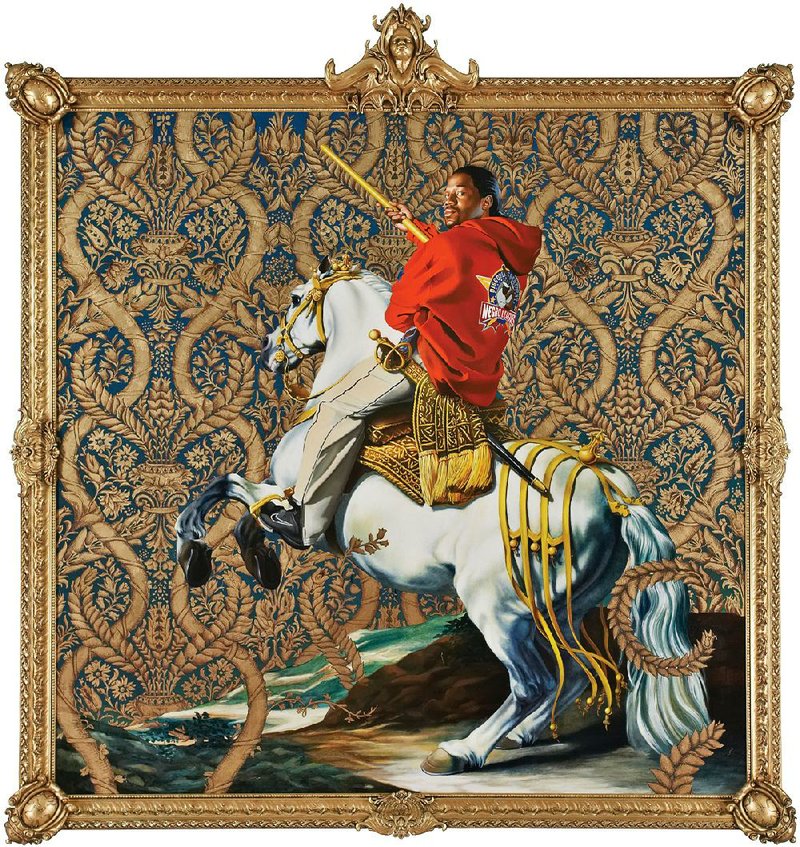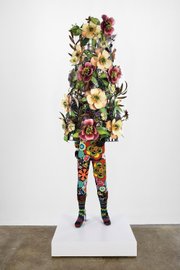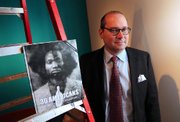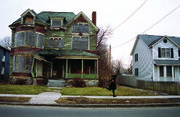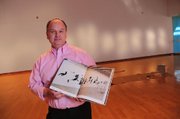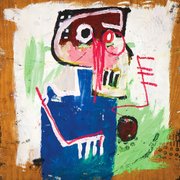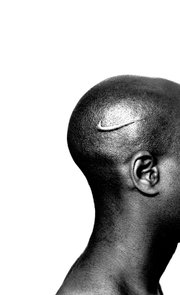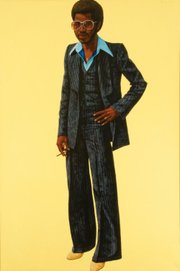The title for the major art exhibition "30 Americans" doesn't reveal much.
Thirty American artists ... and that's about it.
“30 Americans”
Friday through June 21, Arkansas Arts Center, Ninth and Commerce streets, Little Rock
10 a.m.-5 p.m. Tuesday-Saturday, 11 a.m.-5 p.m. Sunday. Closed Mondays.
Admission: free
Sponsors: Presented by John and Robyn Horn; sponsors include Albert and Traci Braunfisch; Fine Arts Club of Arkansas; Friday, Eldredge & Clark, LLP; Just Communities of Arkansas; Morris Foundation Inc.; Munro Foundation
Info: (501) 372-4000, arkansasartscenter.…
But when the traveling exhibition opens Friday at the Arkansas Arts Center, people will see what executive director Todd Herman calls "a sweeping survey of artwork by many of the most influential African-American artists of the last four decades."
"30 Americans" includes the pioneering and influential work of luminaries such as Jean-Michel Basquiat, Carrie Mae Weems, Barkley L. Hendricks and Robert Colescott, along with emerging artists such as Kehinde Wiley, Hank Willis Thomas, Shinique Smith and others.
It is a multigenerational gathering of artists who explore and examine race, history, sexuality, pop culture and gender and their impact on self-identity.
"We are trying to create a schedule of exhibitions, whether from our own collection or traveling exhibitions, that give voice to [diverse] viewpoints and perspectives and holds a mirror up to society," Herman says. "That allows artists to reflect back their interpretations of the world in which they live and the cultures they see.
"Artists pick up aspects of society and culture, magnify them, turn them back to us, often in a very beautiful way ... a difficult subject is presented in a very beautiful way and the viewer is sucked into the message -- no matter how disturbing or troubling it might be. This melding of aesthetic beauty and messages is what art has always done, it's always been a conveyor of meaning."
The men and women of "30
Americans" have created powerful and beautiful art with themes and messages that are often provocative -- created to confront, provoke thought, illuminate and challenge the viewer.
One of the exhibit's most powerful works is Kara Walker's black cut-paper silhouettes titled Camptown Ladies. The installation, which is some 55 feet long and 8 feet tall, takes on the appearance of an antebellum scene as it depicts slavery, violence and cultural stereotypes.
Pop culture and advertising's impact is another theme. Hank Willis Thomas' photograph, Branded Head, shows the shaved head of a black man "branded" with the Nike logo. In this work, pop culture materialism meets social and historical commentary in a 52-by-99-inch image.
The exhibit comes from the collection of Mera and Don Rubell of Miami, who started buying art in the late 1960s. The couple has assembled one of the largest private collections of contemporary art in the world, which they house in a 45,000-square-foot museum.
"None of this magically appeared in the 1990s and early 2000s," says the Arts Center's chief curator Brian Lang. "It is a mix of influences and references to pioneering African-American artists, along with Jasper Johns, Andy Warhol and Robert Rauschenberg."
This show has its roots in the Rubells' experiences visiting artists in their studios and discussing influences, Herman says.
"They heard some of the same names over and over again, names of artists in most cases that were already in their collection," he says. "They started thinking there was a show in the generational movement of African-American art from the earlier artists to what's being done today, how the messages are continuous, how it's changed and how new generations have taken what they've learned from the groundbreaking work of their predecessors and moved forward into different areas."
Many of the works are large-scale; so much so, the Arts Center could handle just 42 of the 71 pieces available.
"We want to give these works the breathing room they need," Lang says. "We could have created a rabbit warren through the gallery, but it would have been a disservice. We are devoting a lot of square footage in this building for the show."
The "breathing room" is needed, Herman says, because some pieces are so large, "the message becomes more inescapable," he says. "You are surrounded by the image, your visual field is taken up fully by the work and its message. That increases in its relationship to the viewer."
Lang says the museum also plans to draw on its permanent collection, displaying works in the museum's Stella Boyle Smith Gallery and making connections to "30 Americans."
"We are picking out four to six works from our collection that fit the idea of art as activism. For example, we can show the Four Stages of Cruelty series [from 1751] by William Hogarth, show how he used satire to comment on contemporary society, and help viewers connect to Robert Colescott in '30 Americans,'" he said.
These works will have special labels.
Herman realizes some of the images in "30 Americans" will be challenging for some viewers.
"One of the points of this exhibition is that many of the themes addressed are not specific to any one group," he says. "The world struggles with self-identity, gender, race. We are seeing it through a lens in this exhibition, but the themes are universal.
"Some images and messages in these works ... a viewer might easily associate with African-American culture, others you don't. You can't always tell the ethnicity of an artist by looking at the work or its theme. Art is universal."
Herman and Lang believe the art will inspire discussion.
"It is my hope that the Arts Center is viewed as an open forum, nonjudgmental place to have these sorts of conversations," Lang says. "The traditional roots of the museum is being a place to contemplate works of art and, by extension, our broader humanity."
Herman agrees. "Museums are a safe haven to have difficult conversations, to confront difficult subjects. You confront the work on your terms or if you don't want to, you don't have to. If you want to have a conversation, you can.
"It's a safe haven for those discussions."
Style on 04/05/2015
